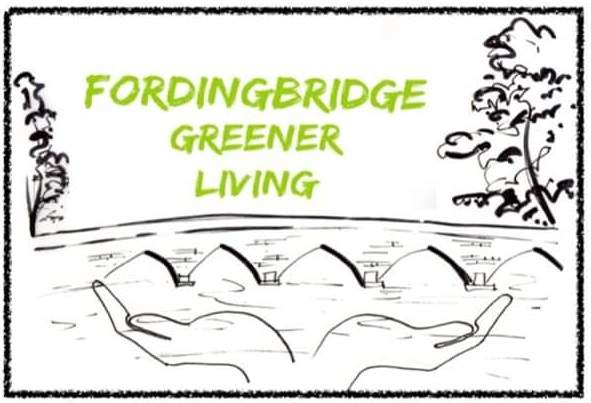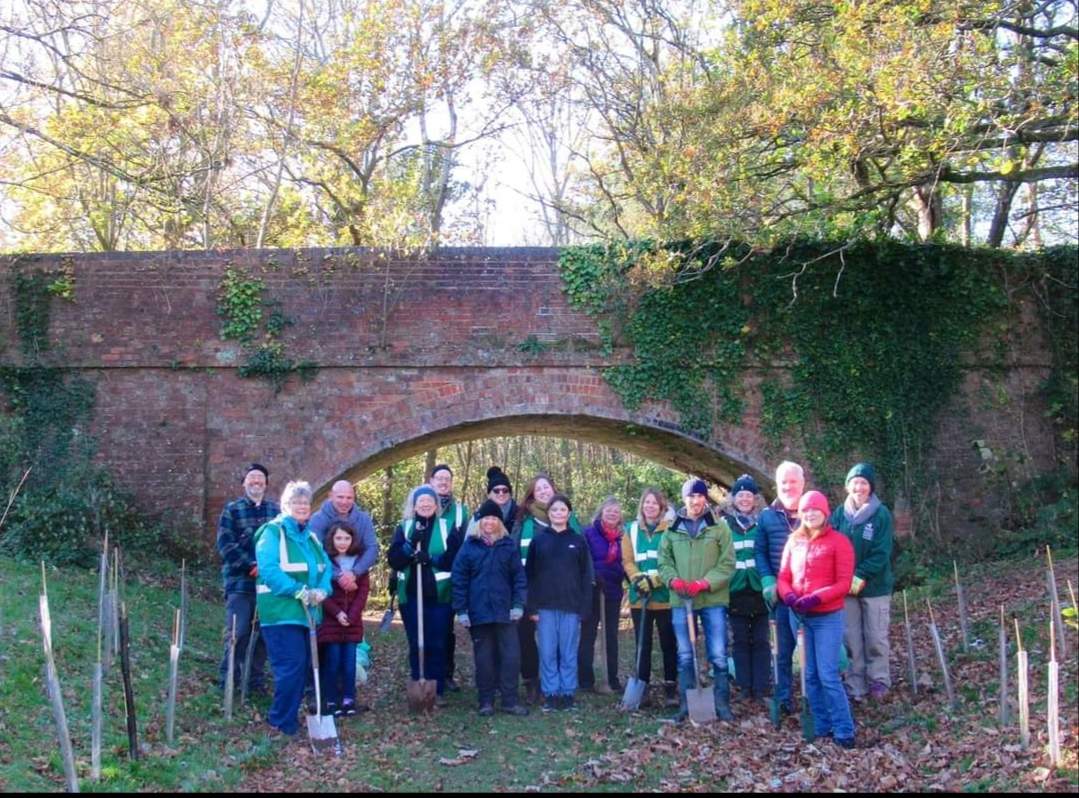Tree Planting
Who are we?
We are a small, but ever growing group of members from Fordingbridge Greener Living (FGL). Members have an avid interest in native flora and fauna, as well as wishing to become actively involved within the local community and volunteer.
In an effort to increase biodiversity within Fordingbridge, we as a group are actively seeking areas which can be used to plant various native trees. As well as supporting locals within Fordingbridge and the surrounding area, to consider rewilding areas of their own and encouraging more wildlife into their gardens.
What are our aims?
- Address the Climate Emergency – trees are an invaluable and under appreciated resource, which remove carbon dioxide from the atmosphere.
- Increase local biodiversity – trees provide both a home and food resource for our native birds, mammals, insects and fungi.
- Reduce flooding – tree roots help absorb excess rain water as well as providing support for the substrate.
- Enhance the local environments – adding more native species will improve our local landscape and make it more beautiful.
In order to meet the aims outlined above, our primary objective is to find areas of public and private land which can be planted with a range of trees, shrubs and wildflowers. We hope to provide a valuable resource for anyone wishing to have a positive ecological impact, from your own back garden to acres of public land. We can offer advice on selecting species of trees or where to plant as well as the best techniques and methods to use. The Tree Planting Project is also currently working towards creating a Community Orchard, which can be enjoyed by the town for many years to come.
Projects
The Woodland Trust
Back in November 2020, The Woodland Trust kindly donated FGL approximately 450 native whips (a slender, young and unbranched tree shoot) as part of their tree planting initiatives involving communities. We have a mix of Hawthorn, Dogwood, Wild Cherry, Silver Birch, Rowan and Hazel. All native species which shall provide stunning blossoms, berries for wildlife as well as some stunning autumn displays. We have now planted these young trees in two locations in Fordingbridge. See below;
Parsonage Park
An area of approximately 50m² located in between Whitsbury Road, Parsonage Park Drive and Sweatford’s Water was the first site to be acquired by our project and was successfully planted in February 2021*. New Forest District Council gave permission for a mix of native species to be planted at the site, which has created Fordingbridge’s first ‘Mini Forest’
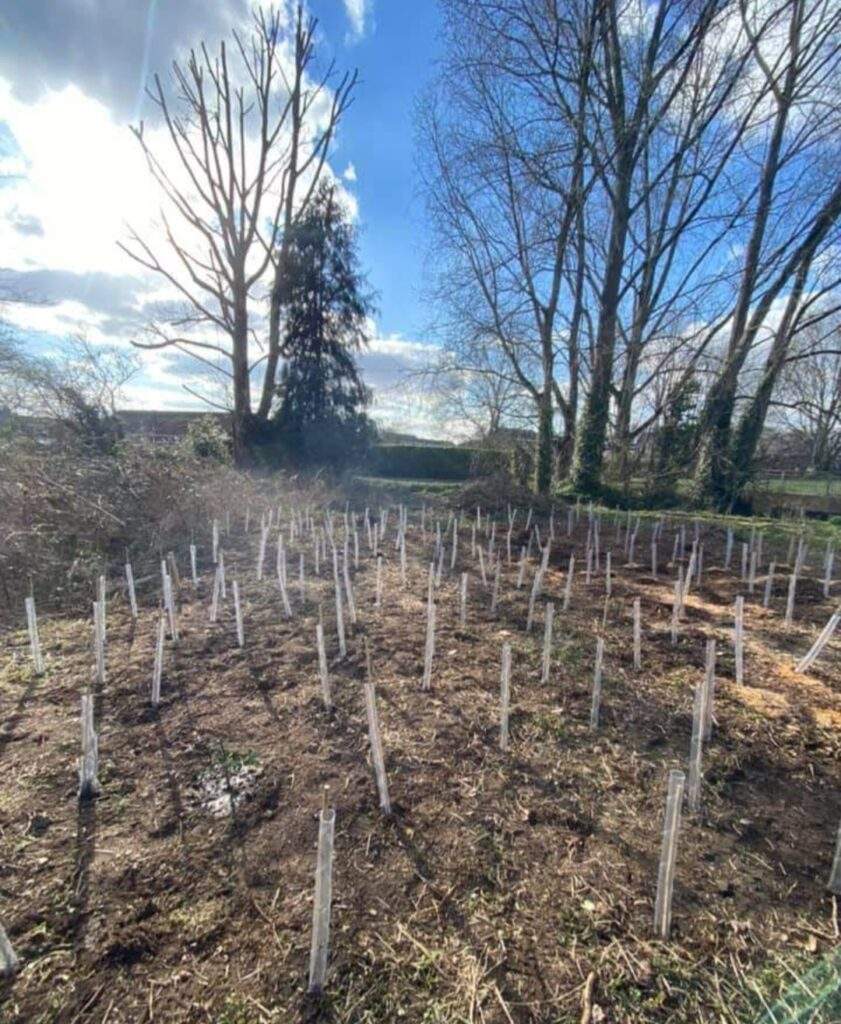

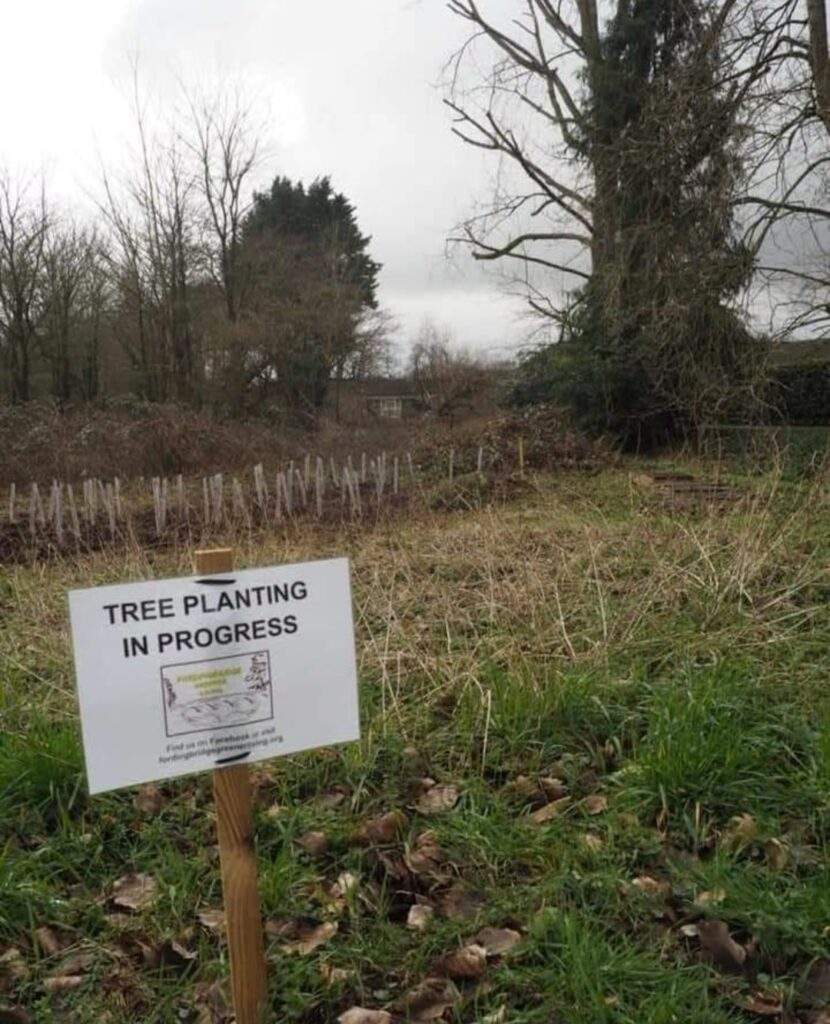
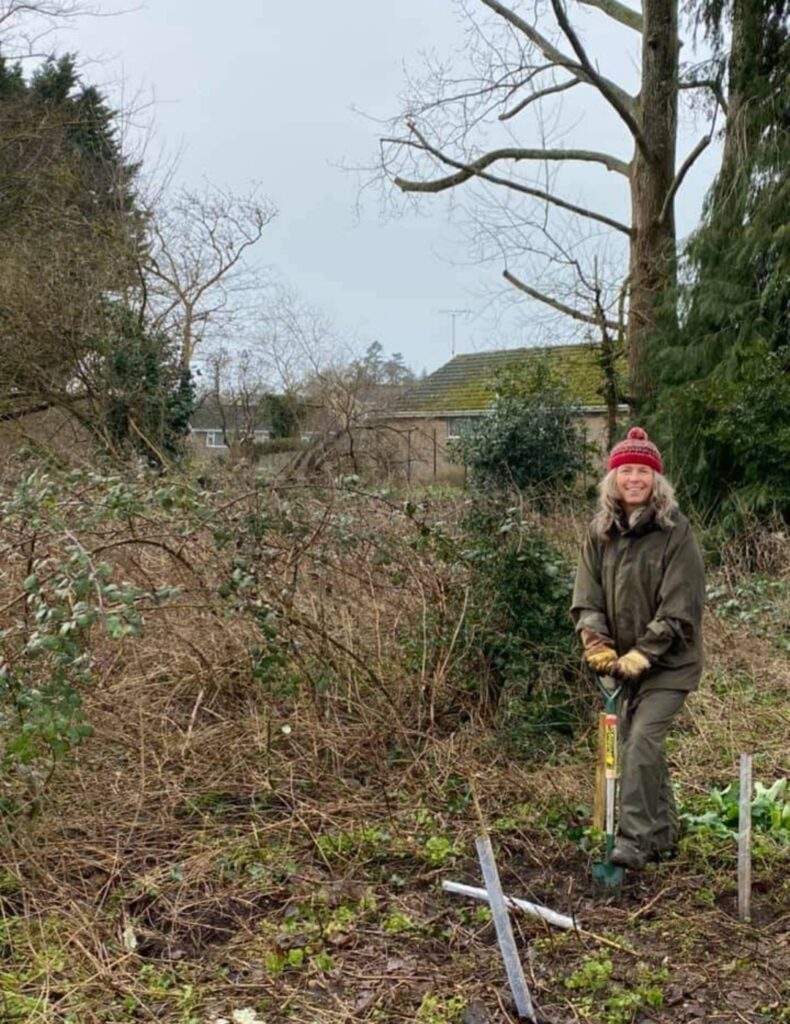
*carried out in accordance to all coronavirus guidelines and fully risk assessed
Parsonage Park – By the Railway Bridge That Connects Parsonage Park and Falconwood
With the support of Fordingbridge Town Council and our team of volunteers we planted the remainder of the trees at the public open space by the old railway bridge. We were very lucky that St.Giles Farm were able to look after the saplings over the summer and our team of volunteers had a cold but very successful morning planting the trees on Sunday 28th November 2021. In January 2022 the town council kindly mulched the area and planted bluebell bulbs.
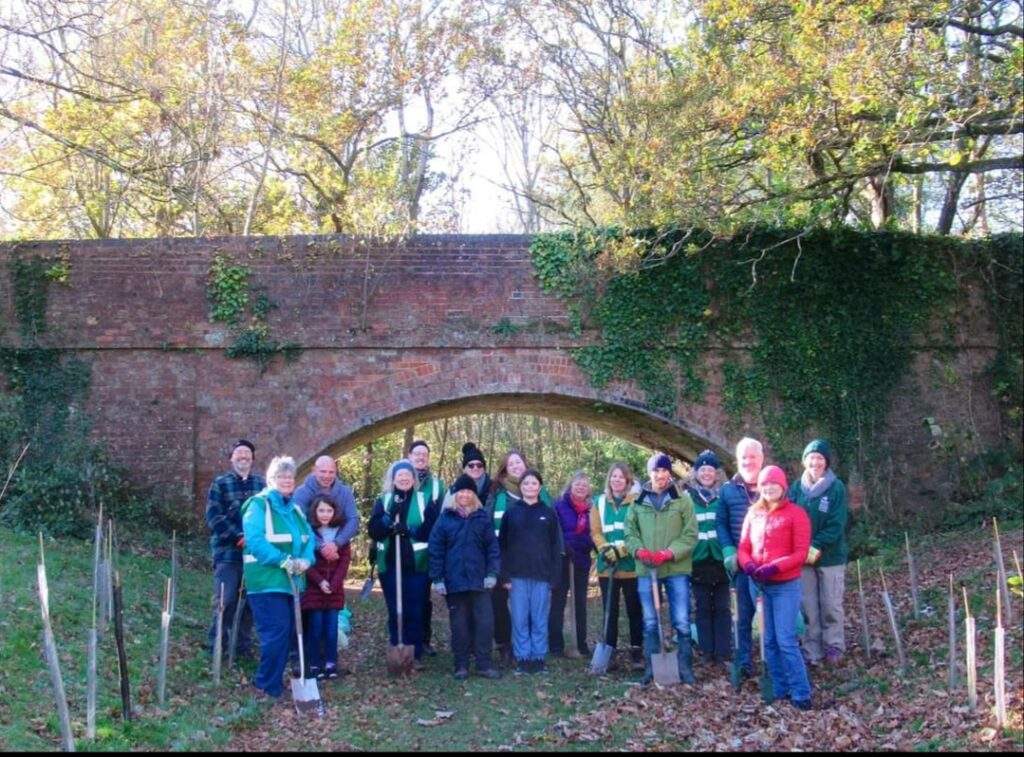
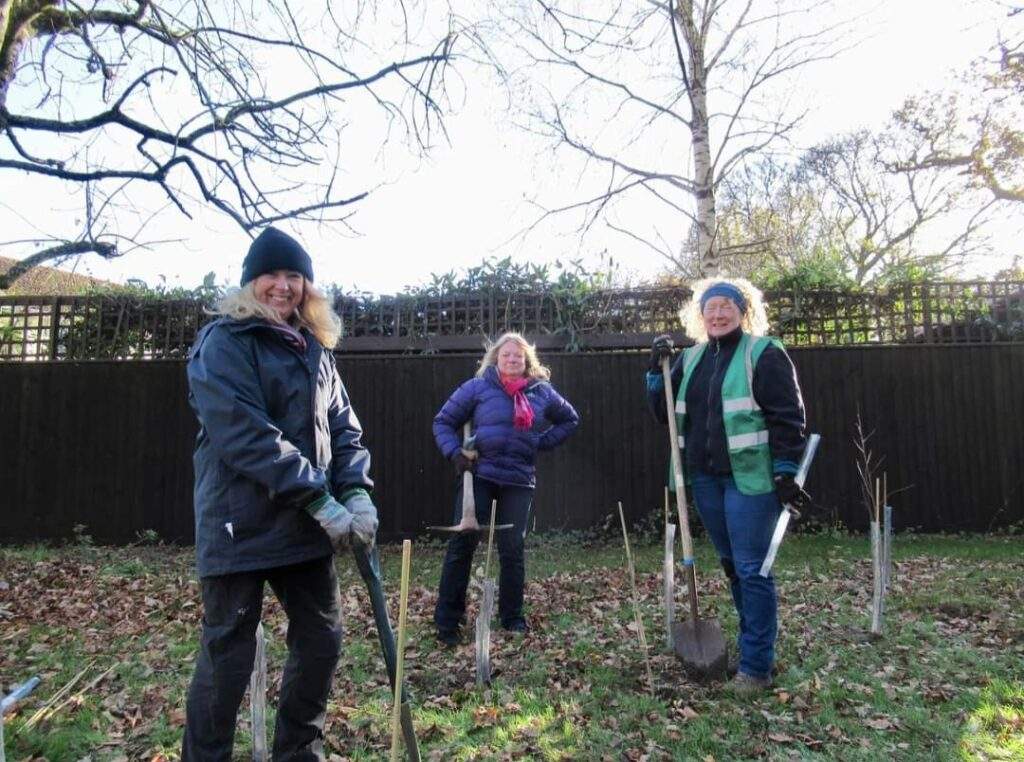
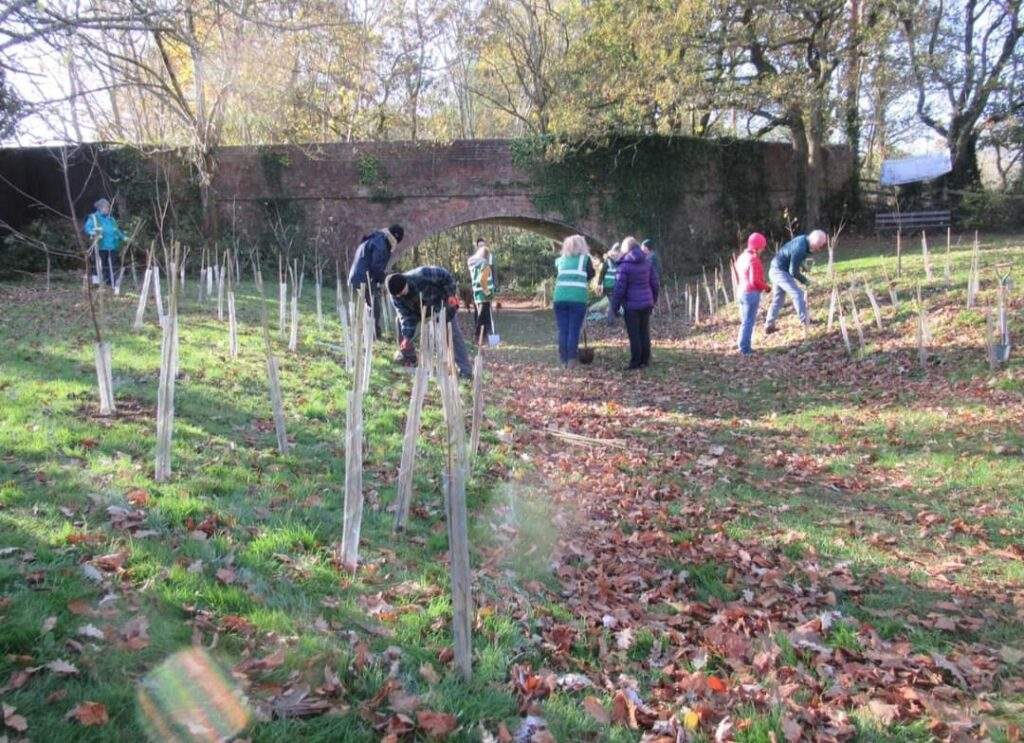
The Community Orchard
We are working in conjunction with Fordingbridge Town Council to create a community orchard. The plans have been agreed and the town council are going to help us fund this project. More details to follow soon and the project will be off the ground Spring 2022. We plan to plant in November 2022. Our plan is to create a space for people to enjoy, an area for young people to learn about trees as well as providing seasonal fruit. The plan is to plant a mixture of apple, pear, cherry, plum, perhaps fig and damson and possibly nut trees. We would also like there to be interpretation for people to learn about the trees.
We are currently working closely with local councils and private developers to secure some more areas within Fordingbridge to start planting more of these whips in the next planting season. We are very optimistic that we shall be able to have a higher level of community involvement and some much larger planting projects for individuals to get involved with.
South Bentley Enclosure, New Forest
This was our first tree planting project which launched this wing of Fordingbridge Greener Living. We got in just before the pandemic closed its grip on us all! In late February 2020, a group of FGL members and students from The Burgate School, Fordingbridge Junior School and Western Dowland School were involved with planting out whips alongside Forestry England at an enclosure in the New Forest. The site had previously been a pine plantation, with limited biodiversity. Forestry England has the aim of restoring the site and re-naturalising with more native species.
FAQs
What can you do to make a difference?
You can have a positive impact on the environment and local biodiversity through various methods, however big or small. Whether you plant a pot with nectar rich flowers on your porch, leave a small section of your garden to go wild, or have space to plant out several different tree species. However big or small, the cumulative effort with our local community can be huge.
When is the best time to plant a tree?
The tree planting season runs from mid November to early March, but it is always best practice to avoid planting when the ground may be frozen as this can damage young, less established roots and prevent the absorption of water. Trees remain dormant throughout winter, and start to grow again during the spring.
Donations
Our Project is dependent on working closely with our community, and we would welcome any donations of native whips, saplings or young trees. We are also looking to work closely with local businesses and property developers.
Tree Planting and Rewilding: A How to Guide.
How to Plant a Tree
If you’re planting bare rooted whips you can simply cut a slit with a spade, drop one into the depth it was grown in its original site. Then tread the soil in around the whip, whilst also gently pulling the whip upwards, this ensures that the soil settles evenly around and under the whip.
Planting bigger trees needs a bit more effort, whether bare rooted or container grown. Dig a square hole that’s more than big enough to take the bare root system or root ball with compost intact. The roots of trees planted in round holes may have a tendency to grow out to the edge of the hole then turn and remain contained within the looser soil, as if they’re in a pot. In a square hole they will at least be more likely to grow out from the corners, even if the surrounding soil is more compact. Loosen the bottom & sides of the hole to give the roots the best chance of spreading. Incorporate into the soil removed, any compost, fertiliser or topsoil that you have to hand if you wish to improve the soil condition. Put a very small amount in the bottom of the hole, place the tree in position, check the depth is the same as it was in its original growing situation, and backfill around it, trending down to firm the fill in layers. It is important to put the mass majority of any compost etc. you are using around the tree as a mulch. The mulch must not sit on the trunk of the tree as this may cause rot. If too much compost is added to the planting hole this prevents the roots from growing strong as they will not need to move away from the tree to look for nutrients. The mulch primarily helps with moisture retention and gives a slow release of nutrients into the surrounding soil whilst also acting as a weed suppressant. If planting a tree in a lawned or grassy area remove all grass within 500cm of the tree.
Trees more than about 1 metre tall may need a stake to hold them in place against wind or unwanted attention from people. If rabbits or deer are present, any size tree might benefit from a protective tube or wire cage. We should try to avoid plastic tubes if possible! If staking, don’t drive it in through the roots as you’re likely to damage them. The stake can be driven into the bottom of the hole before the tree is put in, driven at an angle into the firm soil beside the hole, or for larger trees consider a stake each side of the hole with a wooden cross-bar fastened to them. The tree should be strapped to the stake or bar with something that won’t cut into it such as a strip of fabric, old bicycle inner tube, etc. This will damage the tree if it gets tight so will need to be checked annually. Don’t be tempted to support the tree high up on its stem. They need to move a bit with the wind to develop a strong root system for later life when they outgrow the support.
New trees will need to be watered frequently in dry weather at least for the first year, maybe two if conditions are very dry. Generally, a bucket full once a week is good practice, over watering, as with excessive compost in the planting hole will prevent strong root growth.
Tiny Forests
Also known as ‘Miyawaki’ or ‘Green Lungs’ is a Japanese approach to planting various tree and shrub species to have the highest, positive impact on increasing biodiversity developed in the 1970s. Tiny Forests are dense, fast growing woodlands of native species. The forests themselves can bring all the environmental and social benefits of a forest as well as providing a rich habitat for our local wildlife within a small space in an urban setting.
Through using this approach, our project aims to provide small areas where biodiversity can be dramatically increased whilst these trees establish themselves. With minimal maintenance in the first few years the trees are eventually left to grow as nature intended. These forests will provide a nature rich and accessible greenspace for Fordingbridge to allow people of all ages to reconnect.
Rewilding
Planting a new tree has its own carbon footprint. The energy used at the nursery, transport and the manufacture of materials such as stakes, protective tubes, or ties are just some of the examples. The maintenance of the tree and surrounding area after planting, perhaps with strimming, watering, mulching, weeding also take manpower, cost money and use valuable resources too.
Rewilding by definition, is the process of restoring an area to its natural and uncultivated state. It may be preferable to leave a site to allow natural regeneration of trees from seeds or suckers produced by mature trees if there are some nearby. In order to achieve this, the site will need to be left for at least a year without mowing, strimming, digging or trampling to determine whether there is a suitable seed bank in the soil already. It may therefore need to be fenced, perhaps with a notice to advise passers by why it is being left undisturbed. As a bonus, the site might then become a haven for wild flowers or brambles which are themselves, an important habitat for nectar feeders and pollinators, seed eating birds, and a refuge for small mammals and other creatures; a small patch of biodiversity in itself.
Brambles should be seen as protective nursery cover for young trees rather than an unwanted intrusion to the area. They will protect against deer and children playing nearby for example. They can be carefully cut back on one third or half of the site each year to help maintain a rich layer of other wildflowers, without damaging the trees among them.
Trees grown in this way are unlikely to require watering or maintenance which transplanted trees will, don’t need staking, and are more likely to be successful.
Wildlife Gardening
You can have a positive impact and increase biodiversity within your own space through various means, whether you have a large garden or a restricted area. Encouraging local wildlife into your space is an incredibly rewarding process.
Try planting native wildflowers and nectar/pollen rich plants in your garden or in pots and containers. Leaving areas of your lawn unmown will also encourage various native plant species to establish. Wildflower seeds are now readily available at local garden centres and with some management you could create a wildflower patch which will return year after year. A key species of establishing a wildflower meadow is yellow rattle (Rhinanthus minor). As their roots develop, they suppress the growth of grasses allowing other wildflower species to establish.
A Peacock butterfly (Aglais io) on verbena.
Creating bug hotels will provide shelter for insects and various bee species. A small pond will establish over time and provide a home for a majority of aquatic invertebrates as well as frogs or newts. Ponds also provide a valuable water resource for mammals and birds visiting your garden.
A Common frog (Rana temporaria) in a homemade pond using recycled materials.
FAQs
What can you do to make a difference?
You can have a positive impact on the environment and local biodiversity through various methods, however big or small. Whether you plant a pot with nectar rich flowers on your porch, leave a small section of your garden to go wild, or have space to plant out several different tree species. However big or small, the cumulative effort with our local community can be huge.
When is the best time to plant a tree?
The tree planting season runs from mid November to early March, but it is always best practice to avoid planting when the ground may be frozen as this can damage young, less established roots and prevent the absorption of water. Trees remain dormant throughout winter, and start to grow again during the spring.
Donations
Our Project is dependent on working closely with our community, and we would welcome any donations of native whips, saplings or young trees. We are also looking to work closely with local businesses and property developers.
Resources & Contacts
Please join our Facebook Group if you wish to be kept updated with all things FGL; https://www.facebook.com/groups/www.fordingbridgegreenerliving.org/).
Email fgltrees@gmail.com if you would like to volunteer or wish to contact us with anything tree related queries.
- https://www.woodlandtrust.org.uk/plant-trees/advice/
- www.savetheoaks.org
- www.earthwatch.org.uk
- https://www.forestryengland.uk/
- www.ivn.nl
- https://landfordtrees.co.uk
- https://www.wildlifetrusts.org/gardening
